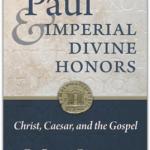In his Caused to Believe, William Bonney follows up suggestions from Charles Giblin regarding the structure of John’s prologue and the structural connections between the prologue and the gospel.
Giblin finds what he calls an X-Y pattern in the prologue: “The X of this pattern encompasses verses 1–13. The Y is made up of 14–18.24 Of the X section, Giblin notes that John discusses the Word . . . in its relation to ‘third persons.’ That is in relation to ‘God’ (1:1–2), ‘things’ (1:3) men (1:4), every man (1:9), ‘the world’ (1:9c–10), ‘his own’ (1:11), ‘as many as did receive him’ (1:12), God’s children (1:12), and ‘those who believe in his name’ (1:12). In the Y section the logos relates to first persons, us/we (1:14), we (1:16)” (p. 47).
Thus, “The three-part movement from: 1) Jesus’ arrival in the world and his meeting with all sorts of people, to 2) the divided reception the world gives him, and to 3) his personal relations with the members of the Johannine community parallels the tripartite narrative structure of the gospel. In the first part (1:19–4:54), Jesus interacts with all sorts of people and encounters no hostility from them. In the second (5:1–10:42), Jesus encounters open hostility and ‘divided responses’ towards his words. In the third part (11:1–20:29), the lines of division between Jesus and his opponents have been clearly drawn; here John develops Jesus’ relationship with his friends’” (48).
Each of these three long sections follows a similar sequence: “Each revolves around a journey to Jerusalem as its geographical center.3 Each highlights one of the gospel’s three Passover feasts as its temporal focus.4 Each contains a distinctively Johannine passion prediction (3:10–17; 8:28; 12:20–33). Finally each division highlights Jesus’ relationships with others in a distinct way” (3).















